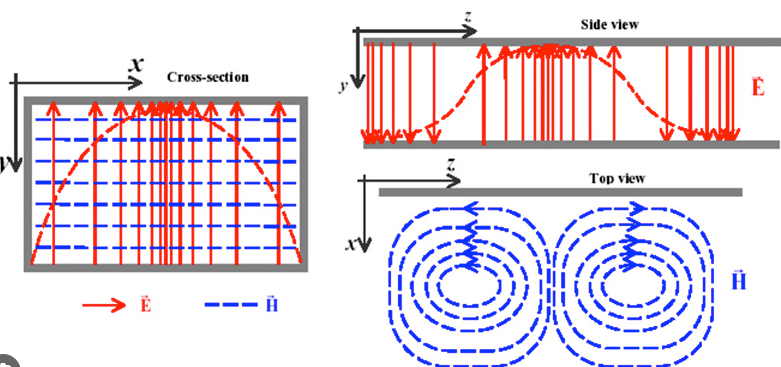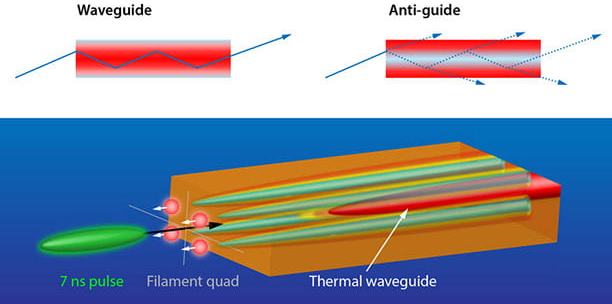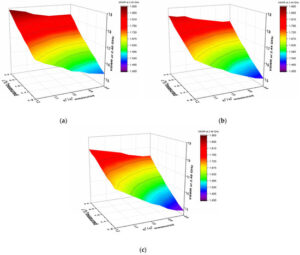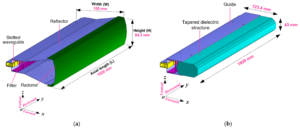The waveguide effect directs electromagnetic waves through a medium, minimizing loss, as in optical fibers with 0.2 dB/km attenuation.
Table of Contents
Definition of Waveguide Effect
The waveguide effect is an essential phenomenon, where electromagnetic waves, light, or sound are confined to a specific direction and distance in a medium. Basically, that means waveguides can be used to guide energy from one point to another for long distances limiting the loss of energy. This effect is crucial to many technologies, especially in telecommunications, photonics, and acoustics.
Types of waveguides
Optical fiber waveguides commonly used in internet and telecommunication networks can extend over thousands of kilometers and suffer an attenuation loss of only 0.2 dB/km. Planar waveguides used in integrated optical circuits are characterized by their micro- and millimeter-wide waveguides. Metallic waveguides commonly placed in microwave and radio frequencies can transmit signals in a frequency range of 300 MHz to 300 GHz.
Wave propagation in waveguides
The term propagation modes refer to the manner the energy differentiation in the field travels through the guides and is represented by definite patterns of electric and magnetic field distribution. For that, propagation trough waveguides can be TE, transverse electric field, standing waves, where the intensity of the electric field is highest at the walls of the waveguide, or TM, transverse magnetic, field, where the intensity of the magnetic field is at its highest point at the walls of the waveguide. Dispersion is another critical aspect of wave propagation, affecting the phase velocity of the waveguide of the wave resulting in wavering signals after long travel through the guide. Dispersion may also accompany frequency modulation and other formerly undesirable phenomena. Waves guides are currently made to have inseparable tissue and anisotropic dispersion.
Applications and uses
Waveguide technology is critical to modern telecommunications, which would not have been such a grand success without the use of waveguides allowing the transmission of internet signals at a bandwidth of over 100 Tbps trough optical fiber networks. In the domain of sensor technology, this technology can be used to the maximum benefit by creating environmental, biological, and chemical sensors. Integrated waveguides are widely used in lasers, modulators, and switches creating compact, chip sized photonic devices. For the design and fabrication of waveguides, appropriate material with the desired properties and advanced technologies are required to put it into effect. Silicat glass is the preferable material for optical fibers as it makes possible to transmit signal long distances with vertices up to ultrapurity. Techniques such as lithography and etching of the substrate are essential for the purpose of waveguide manufacturing making possible for the creation of necessary waveguide structures with certain roughness. For acquiring specific waveguide design to be used in specific purposes for all the options they are definitely to be modeled properly. Computational methods such as Finite Element Analysis, FEA, and the Beam Propagation Method, BPM, give the possibility to see the actual situation regarding the beam behavior and dispersion effects, optimize the process and create waveguides of specific parameters. Advanced topics in waveguide technology are a nanoscale waveguide which give the possibility of turning photonic circuits into a chip and quantum waveguide technology for quantum computing and information processing.
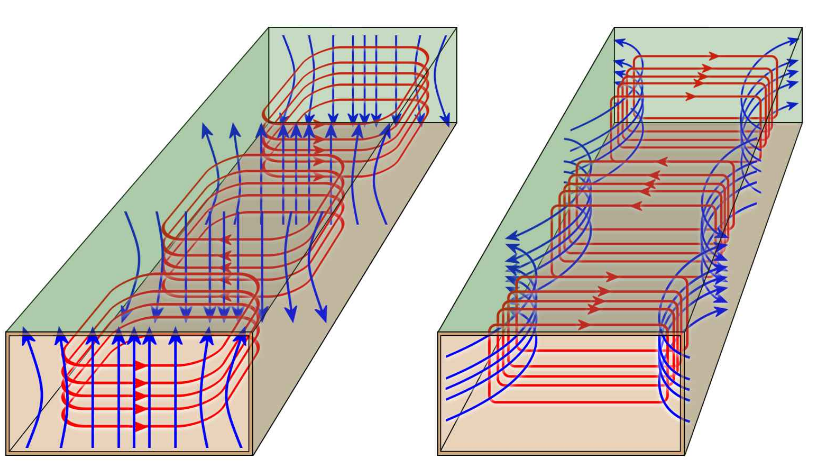 Electromagnetic Theory in Waveguides
Electromagnetic Theory in Waveguides
Application of the electromagnetic theory for waveguides explains the principles of how the electromagnetic waves in different types of waveguides, such as optical fibers, planar waveguides, and metallic waveguides, are propagated. It provides a standard for the waves’ behavior in confined geometries, and for planning the most efficient waveguide systems. Explanation for different types of modes: the electromagnetic fields in one waveguide can exist in totally different modes with various patterns of the electric and magnetic field orientation. Basically, the modes that exist in waveguides can be divided into transverse electric and transverse magnetic modes. In TE modes, the electric field is completely transverse to the direction of the wave’s incident; TM mode electric field is totally transverse to the direction of the wave’s proceeding, and the magnetic field, alternatively, is completely transverse to the wave’s accumulated distance. One of the most essential modes in optical fibers is the fundamental mode because it assists in implementing the lowest loss, transporting waves over 100 km without amplification; and the signal losses in this mode of the single mode fiber are less than 0.2 dB/km .
Wavelength of light and the size/shape/dimension of waveguide: the electromagnetic waves’ propagation in waveguides is led by Maxwell’s equations, which can be utilized to show how the electrical and magnetic fields interfere. The equations’ derivations for waveguides eventually result in the wave equation, which enables to explain that not all frequencies in waveguide are capable of being propagated. Rather, it is known that each waveguide type and system transport-line configuration has its passband. A cutoff frequency is where each guide’s lowest frequency standard is reached. For example, the cutoff wavelength in a standard single-mode optical fiber is about 1.3 micrometers.
Dispersion and Losses
Dispersion is a key phenomenon in waveguides that results in spreading a signal pulse along a waveguide. In telecommunications, where pulses can travel long distances, it is important to minimize dispersion. In optical fibers, this is done by choosing an appropriate wavelength of operation. For silica fibers, which are a popular type of optical waveguides, a suitable choice of the operating wavelength is near 1.55 micrometers. This minimizes the so-called material dispersion, which is due to the dependence of wave velocity on frequency . Additionally, losses are an issue in practical waveguides. The absorption of the wave due to radiation and scattering is difficult to reduce considerably but fabrication techniques have improved and better materials purity and quality are possible, leading to reduced absorption . Scattering is reduced by using improved technologies that produce smoother waveguide surfaces.
Waveguide Materials and Fabrication
The requirements of a low loss and high bandwidth determine the choice of materials for waveguides. For instance, materials for optical waveguides should minimally absorb and scatter light. Due to this, optical fibers use silica, which has small absorption and scattering loses . For microwave propagating waveguides, metal waveguides, a material choice includes, copper or aluminum, which are of low resistance at high frequency operation . As for the fabrication, new technologies allow precision and reduction in the production of defects. For instance, optical fibers are created by the Modified Chemical Vapor Deposition process, which allows creating fibers with precisely controlled refractive index profiles with the proper refractive index and cladding profiles to minimize the losses related to scattering and dispersion .
Applications and Future Directions
Waveguides are the basis for modern telecommunications and are used in the internet. In photonics, waveguides compose integrated circuits. Future directions include the use of waveguides in compact optical devices and exploiting nonlinear optics in waveguides for advanced signal processing.
Wave Propagation in Waveguides
Wave propagation in waveguides is an important and effective process for information and energy transmission, which occurs via radiation in the form of a variety of electromagnetic waves. In telecommunications, sensing, and in other applications featuring waveguide systems, the knowledge of wave propagation principles allows for an effective and efficient design of such systems.
Types of Waveguide Modes
Electromagnetic waves in a waveguide can manifest themselves in corresponding modes, which can be determined by the waveguide’s field distribution. The basic modes are transverse electric and transverse magnetic , which have certain peculiarities. For example, in rectangular waveguides, TE modes may yield the lower cutoff frequencies in comparison with TM modes, suitably used for the lower frequency regions . Hybrid modes are primarily supported by optical fibers and have both electric and magnetic components. HE11 is the fundamental hybrid mode, and in the single-mode fibers it is the only mode of this kind, outstanding with its electric field being maximal on the fiber’s core boundary while the magnetic field is smallest on its axis.
Dispersion in Waveguides
Dispersion is a feature observed when different frequency components of a wave travel at varying speeds, and it can be distinguished into two major types which can affect fiber-optic communications. The material dispersion of silica-based optical fibers is negligibly small near 1.55 micrometers where the minimal loss is observed, and such fiber is used more frequently than others. The waveguide dispersion can be adjusted by varying the waveguide’s features and depends on the wavelength – therefore, it can compensate the fiber’s dispersion in the specific bandwidth.
Losses in Waveguides
The losses in waveguides are a vital factor affecting the waveguide system’s efficiency and thus, their minimization is important. Absorption losses stem from the material nature of the waveguide and are usually caused by the material’s impurities. State of the art optical fibers have the absorption losses in the region of near infrared are highly reduced . Scattering losses result from the imperfections in the medium and are reduced, in the case of optical fibers, by the extreme purification of the silica material and modification of the manufacturing process.
Waveguide Materials
The waveguide’s properties are highly reliant upon the material used for its creation. Silica fibers are distinguished for their minimal absorption and scattering losses and for their ability to transmit signals over distances up to 100 km without signal amplification. For microwave or radio frequencies, good conductivity and reduced frequency at copper and aluminum are used in the form of metallic waveguides.
Fabrication Techniques
Various methods and processes are used to fabricate waveguides of different types and quality. The Modified Chemical Vapor Deposition process is used widely in fiber-optic technology and allows important substances, such as dopants, to be controlled on the molecular level.
Future Developments
The future innovations are likely to include nanoscale waveguides leading to fully developed nanophotonic systems and the employment of nonlinear optical effects for advanced signal processing means.
Modes of Propagation
The principles of propagation refer to the order or types of modes that are permitted to travel and get guided by the waveguide . In other words, the modes of propagation within waveguides outline the approach through which electromagnetic waves will move and be controlled through the medium. These principles play a vital role in the design of waveguides that promote the effective transmission of energy with comparatively minimal losses. A brief overview of the following principles of propagation sheds light on the multidimensionality and application of the concept.
Transverse Electric Modes
In Transverse Electric modes, the electric field is at a right angle or transverse to the direction of wave propagation . TE modes mostly cause the absence or nullity of the electric field component in the direction of propagation . In microwave waveguides, TE modes become vital because they can sustain high power transmission and generally low levels of losses. For example, the TE1₀ mode is mostly used in rectangular microwave waveguides because they have the lowest cutoff frequency. Cutoff frequency refers to the point where no single mode can have propagation. TE1₀ mode has consistently and effectively promoted energy transmission without the mixing of modes .
Transverse Magnetic Modes
In Transverse Magnetic modes, the interdimensional and the multidimensional magnetic fields are usually perpendicular to the direction or the path of propagation. Also, there is no magnetic field component that can be allowed to pass along the propagation path . Thus, these modes are essential and quite useful in the optical and microwave waveguide applications that require an angle to the magnetic field . In particular, planar waveguides are designed to have more or higher field intensities within the guiding layer. Naturally, the field intensities of the magnetic field are higher when a particular mode of variable experiences lower frequencies.
Transverse Electromagnetic Modes
In Transverse Electromagnetic modes, both electric and magnetic fields are at a right angle or transverse to the direction of wave propagation . TEM modes are best suited for coaxial cables and two-wire lines because they are necessary for the medium of transmission that is free of charges in the waveguide. Generally, these modes are the most effective in the setting of a uniform signal transmission. For example, the TEM mode has no cutoff frequency and hence can handle broadband. Moreover, the TEM mode can handle and trig signals over the GHz range without additional dispersion and attenuation .

